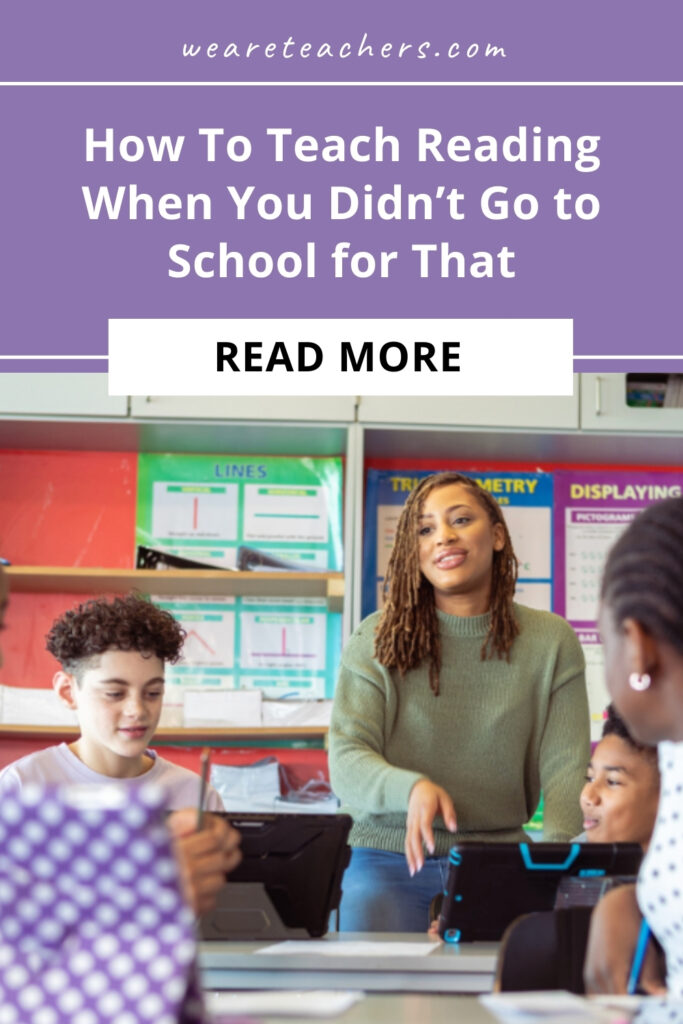We’ve all heard about the shift kids are supposed to make from “learning to read” to “reading to learn.” But how can that learning happen when NAEP data shows only 34% of students in grades 4 through 8 are reading proficiently? Many older students still need word-reading instruction and support with fluency, vocabulary, and more. Without foundational literacy skills, middle school students can’t comprehend and learn from grade-level reading material—in any subject. Educators everywhere, but especially content-area teachers, are caught in a giant game of catch-up. What if, like many teachers, you didn’t go to school for literacy instruction? Here are six strategies for how to teach reading in the upper grades.
1. Research how to teach reading effectively.
Reading-achievement scores have been stagnant for several decades. Plus, teacher-preparation programs don’t reliably include comprehensive training on how to teach reading using research-based strategies. This means that many teachers—including teachers of upper elementary and middle school students—need a knowledge boost about the science of reading. Look for flexible PD options, like Lexia Aspire, that are tailored to the upper grades to help you learn what strategies have been shown to work best for adolescents—and how to transfer strategies in all classrooms. Adding to your own learning is 100% worth the time, and it’s your best bet for creating an equitable classroom for all readers.
2. Start with student data to make an action plan in your subject area.
Knowing how your students struggle with reading is essential, even if you aren’t an ELA teacher. Maybe they get stuck decoding, or sounding out words—and as a result, they are unable to focus on comprehending. Perhaps it’s academic language that’s the major roadblock. Once you know, you can better empathize with students and make plans to support them during grade-level learning. Look at each unit you teach with their instructional needs in mind. Note places where students will likely need extra support. Then, look for opportunities to bolster their skills. While many kids will need targeted, systematic reading intervention, thinking of literacy learning as something that happens all day can also have a big impact.
3. Teach students strategies that align with the reading brain.
Learners who need to improve their reading often develop coping strategies that end up failing them, like guessing at or skipping words they don’t know. Share how many different brain regions must work together for a reader to connect written letters to a word’s spoken sounds, connect those sounds to meaning, and understand the meaning of the word in the context of the text. Talk about how building the brain connections needed for reading is like training for a sport or practicing a hobby.
4. Use a fluency practice routine.
Reading fluently means the effortless flow with which proficient readers read with appropriate speed, accuracy, and rhythm. As a result, a reader can shift their attention to comprehension. Providing students with the opportunity to practice reading aloud, especially with texts that are at or slightly above grade level, is a worthwhile exercise that can help achieve fluency. A routine can help this happen. For instance, introduce a text at the start of the week. Then, practice it as echo or choral reading on Tuesday and Wednesday. Have students work in pairs or record themselves to further refine it at the end of the week. Use text related to your subject area and you’ll do double duty working on students’ literacy skills and content learning.
5. Spend time teaching vocabulary before kids see those words in texts.
Updating your approach to introducing new vocabulary words is a small but powerful change. (Hint: Simply asking students to look up words in the dictionary is not the best way.) It’s important to introduce new vocabulary in advance of a lesson where students will encounter those words.
Show students how to break a new word into syllables and use letter sounds to read it. Talk about the origins of the word and its meaningful parts (morphemes), such as Greek or Latin roots or affixes. Give a student-friendly definition of a word, connecting it to other words your students know. Then, revisit vocabulary words in engaging ways like charades, word sorts, or conversation prompts.
6. Work on sentence writing.
Writing helps kids consolidate what they’ve learned. Crafting a rich, informative sentence—whether it communicates a definition, an explanation, or a reaction—is an underrated task. Use engaging sentence-writing assignments across all subjects to improve kids’ understanding of content while you strengthen their literacy skills. Working at the sentence level lets you shore up students’ understanding of grammar. Plus, it builds their knowledge of words and how to use them effectively.
Looking for more support in teaching reading to older students? Learn more about Lexia Aspire Professional Learning.


